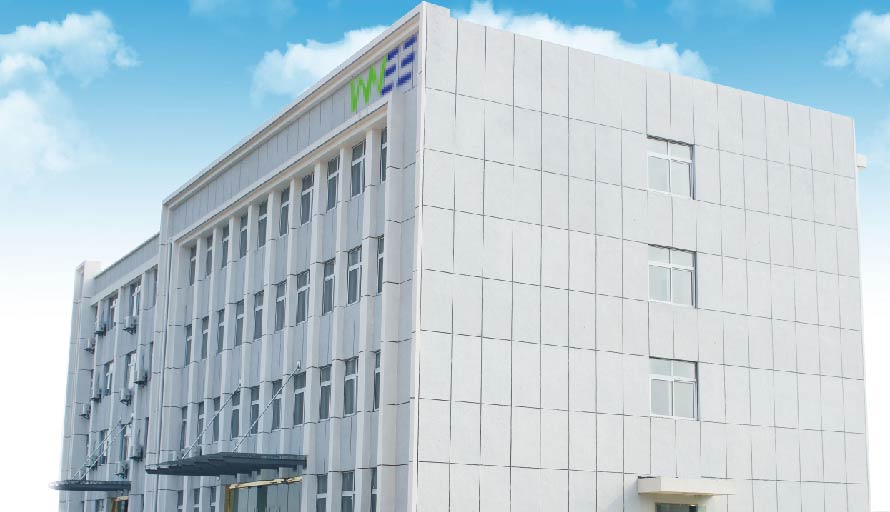More and more household energy storage systems are replacing traditional lead-acid batteries with lithium iron phosphate (LiFePO4) batteries to provide more efficient, reliable, and environmentally friendly energy storage solutions. Home energy storage refers to the storage of electricity locally by household users for future use. Currently, home energy storage is mainly used in conjunction with household photovoltaics to form a home photovoltaic storage system, in order to achieve self balancing of household power generation, storage, and consumption. With the continuous development of photovoltaics and the steady increase in penetration rate, the integration of household solar energy storage has become the mainstream direction for the development of household photovoltaics in various countries.

(1) Home energy storage can be understood as a miniature energy storage power station in a home setting. Usually used in combination with photovoltaics, its operation is not affected by urban power supply pressure. During low battery periods, energy storage batteries can charge themselves for use during peak hours or power outages.
(2) The global home energy storage market has just started and is far from saturated. In 2022, the new installed capacity of global household energy storage will reach 15.6 GWh, a year-on-year increase of 136.4%. It is expected that the global installed capacity of household energy storage will reach 172.5GWh by 2030, and the global household energy storage market will grow from 75.45 billion in 2022 to 155.84 billion in 2026.
(3) Market heat: Domestic new and old players compete to expand overseas home energy storage business
Market distribution: Demand is concentrated in high electricity prices and high-income countries, with Europe and the United States each accounting for 1/4 of the global market.
Global household savings installed capacity distribution in 2023: 26% in the United States/23% in Europe/17% in Japan/6% in Australia
(4) For countries and regions such as South Africa, due to relatively weak power grid facilities or the threat of natural disasters, relatively affluent families urgently need to allocate household energy storage.

Africa: New energy is the most cost-effective energy driving force for Africa's development
One of the important reasons for electricity shortages in Africa is the weak electricity infrastructure. The immaturity of the transmission network has limited the development of traditional energy projects.
Photovoltaic power generation
can be achieved without relying on the large power grid, by constructing off grid systems or microgrids, effectively solving the power supply problems of African countries. The International Energy Agency
emphasized in its 2022 Africa Energy Outlook
report that there is enormous investment potential in renewable energy in Africa. By 2030, Africa's electricity demand will increase by 75% compared to current levels, and renewable energy electricity is
an important force in meeting this new electricity demand.
It is expected to contribute 27% of the power generation, which is 8 times that of 2020.
The power grid systems in developed overseas regions are entering an aging period. In addition, the overseas power market has a high degree of marketization, and there is a significant lack of investment i
n power infrastructure and system reliability, leading to increasing challenges for the reliability of overseas power supply.
The high initial investment cost is the main obstacle for users to install home energy storage systems. Major overseas regions and countries have successively introduced relevant incentive policies, mainly
divided into tax exemption and implementation of fund subsidies, to stimulate the rapid development of energy storage demand for overseas households.
Competitive landscape: The global competitive landscape is significantly regionalized, and the overall market is relatively dispersed
According to household energy storage terminal products, they can be divided into two forms: split unit (with separate battery and inverter configuration) and integrated unit (with energy storage battery
and inverter integrated into one device for sale).
At present, domestic manufacturers usually enter the overseas home energy storage market from upstream batteries or inverters in the industry chain, and the All in One system is mainly concentrated
in local overseas brands.
Product category:

Split type refers to the installation of household split machine batteries and inverters separately. Users can match household energy storage inverters according to their own needs, and can also match switch mode power supplies or inverters as backup power sources.
At present, most split type batteries are used to replace all lead-acid batteries in the current market. Due to the earlier appearance of lead-acid batteries, most household energy storage batteries on the market are mainly lead-acid energy storage batteries, just like lead-acid batteries. A more suitable new type of energy storage battery has been developed, which is lithium iron phosphate battery. It is environmentally friendly, pollution-free, safer in extreme environments, and has a longer service life. Moreover, the current price of lithium iron phosphate battery cells is about 0.6/Wh. With the significant decrease in raw material prices and technological progress, the cost-effectiveness of lithium iron phosphate batteries is becoming higher and higher, and will become an important direction for energy storage battery supply in the future. Applied to all household energy storage series

The development of all-in-one machines towards All in One, lightweight, and intelligent direction
(1) From split machine to all-in-one machine. At present, the products on the market are mainly split type machines (i.e. batteries and inverters are configured separately), and will gradually move towards
All in One (integrating batteries and inverters into one machine). Development direction of equipment sales. Although the overall price of All in One is relatively high, its integration is high, which can reduce
the installation difficulty and cost for consumers, and also make after-sales service simpler.
(2) The product tends to be aesthetically pleasing, compact, and installation free. Fewer and fewer consumers are willing to place large and bulky products in their homes for home energy management.
Future products will be designed to be more aesthetically pleasing, compact, and installation free, while also taking into account outdoor usage attributes. It will be more favored by consumers, such as in outdoor activities,
outdoor gardens, RVs, and other scenarios, which can be achieved through wheeled mobile design or the relocation of battery modules.
(3) Developing towards intelligence, APP, and interactivity. In the future, product interaction will become more intelligent. By using the app, intelligent product management can be achieved, such as real-time monitoring
of solar power generation, setting preferences to optimize energy modes, power-off protection or energy conservation, real-time alarms, and remote access to energy storage systems that can be controlled anytime, anywhere.
The difference between split type machines and all-in-one machines is that split type machines are relatively more cost-effective, while all-in-one machines are more beautiful, compact, lightweight, and installation free,
tending towards intelligence
The purpose of all energy storage products is power backup, power outage protection, and energy independence, rather than reducing electricity prices.
The advantages of LiFePO4 energy storage products are full utilization of energy, safety, intelligence, and environmental protection
Home solar energy storage system solutions
Official website: http://www.wweenewenengy.com
Email: info@wweeess.com
Whatsapp: 971 569864517







